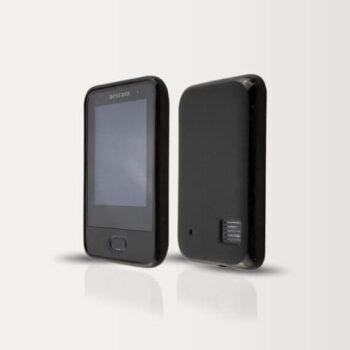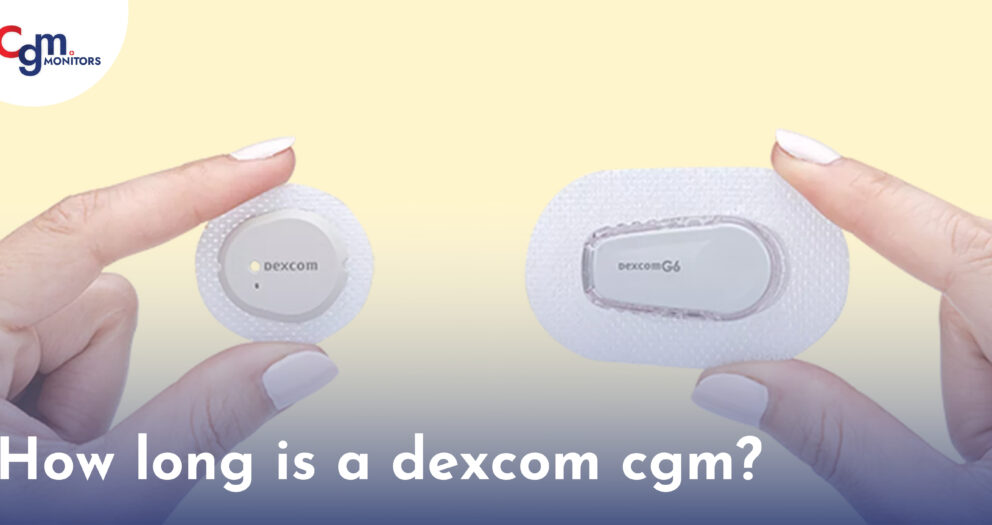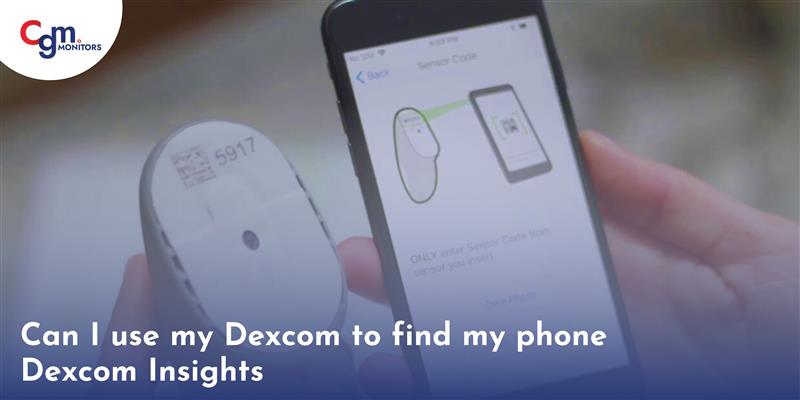Table of content
Introduction
Many people face Dexcom G6 sensor failure problems that compromise the diabetes management plan of the patients. The users must know why and solutions to such issues in their CGM devices. In this article, we will be discussing the causes and solutions for Dexcom sensor failure.
As technology advances, medical devices such as continuous glucose monitors (CGMs) have become increasingly sophisticated. The Dexcom G6 sensor is a CGM device that reads glucose levels to diabetes patients, enabling them to continuously monitor their blood sugar levels. However, the Dexcom G6 sensor is not immune to failure like any medical device.
In this article, we will examine the reasons behind Dexcom G6 sensor failure, the factors contributing to it, and how to mitigate the effects of sensor failure.
Dexcom G6 sensor anatomy & function
The Dexcom G6 comprises three parts a sensor, a transmitter, and a receiver. The sensor is a small wire inserted under the skin, measuring glucose levels in the interstitial fluid. The transmitter is attached to the sensor and sends glucose level readings to the receiver, which displays the readings. The Dexcom G6 sensor is designed to provide accurate and reliable glucose level readings for up to 10 days.
Types of sensor failure
Dexcom G6 Sensor Failure can occur in different ways. Some of the common types of sensor failure include:
Signal loss: Signal loss is a technical Dexcom sensor error when the Dexcom G6 transmitter cannot transmit data signals to the receiver. This can happen for various reasons, such as interference from other electronic devices, obstacles between the transmitter and receiver, or weak transmitter batteries.
Calibration failure: Calibration is entering a blood glucose value into the receiver to calibrate the sensor. Calibration failure occurs when the sensor fails to calibrate, resulting in inaccurate glucose readings.
Sensor error: Sensor error is a technical problem with the Dexcom G6 system when the sensor stops working properly. This can result in a loss of accurate glucose level readings. It also becomes a concern for individuals relying on the Dexcom G6 system to manage their diabetes.
Factors contributing to sensor failure
Several factors can contribute to Dexcom sensor failure. Some of the common factors include:
Insertion site: The sensor should be inserted in a suitable site, such as the abdomen or upper buttocks. Inserting the sensor in an unsuitable location, such as the arm or leg, can lead to inaccurate readings and sensor failure.
Sensor handling: Mishandling the sensor during insertion or removal can damage the sensor and result in sensor failure.
Transmitter issues: Transmitter issues, such as a low battery or poor connection with the sensor, can lead to sensor failure.
Environment: Environmental factors such as high humidity, extreme temperatures, and electromagnetic interference can affect sensor performance and lead to sensor failure.
Dexcom G6 sensor failure impact on diabetes management
Sensor failure can have a significant impact on diabetes self-management. Accurate glucose level readings are essential for managing diabetes effectively. Inaccurate readings can lead to incorrect insulin dosing or other medications, resulting in hyperglycemia or hypoglycemia.
Sometimes, a sensor failure can go unnoticed, delaying taking medicine as the device does not alert you about the situation.
Moreover, severe medical emergencies such as diabetic shock can go unnoticed, which can be fatal for the patients.
Mitigating sensor failure
To mitigate Dexcom G6 sensor failure, it is essential to take the following steps:
Proper insertion site: Ensure the sensor is inserted in a suitable site, such as the abdomen or upper buttocks, as the manufacturer recommends. Avoid inserting the sensor in unsuitable sites like the arm or leg, as it can lead to inaccurate readings and sensor failure.
Proper sensor handling: Handle the sensor with care during insertion and removal. Mishandling the sensor can damage it and result in sensor failure.
Check transmitter issues: Regularly check the transmitter to ensure it functions properly, with good battery life and a good connection with the sensor. If the transmitter is not working properly, it can lead to sensor failure.
Consider the environment: Environmental factors like high humidity, extreme temperatures, and electromagnetic interference can affect sensor performance and lead to sensor failure. To mitigate these factors, avoid exposing the sensor to extreme temperatures and keep it away from electromagnetic devices.
Regular calibration: Calibrate the sensor regularly as per the manufacturer’s instructions. Calibration is entering a blood glucose value into the receiver to calibrate the sensor. Periodic calibration can prevent inaccurate glucose level readings and mitigate sensor failure.
Replace the sensor as needed: If the sensor is not working properly, it may be necessary to replace it to restore accurate glucose level readings and prevent further sensor failure.
Dexcom sensor replacement request
A Dexcom Sensor Replacement Request is a process to request a replacement sensor from the manufacturer, Dexcom when the current sensor is not functioning properly or has failed.
This process is typically initiated when a user of the Dexcom G6 system experiences sensor failure or inaccurate glucose level readings despite troubleshooting the issue.
To request a Dexcom sensor replacement, users can contact the manufacturer’s customer support team via phone, email, or online chat. They will need to provide information about their Dexcom G6 system, including the transmitter’s serial number and the current sensor’s lot number.
They may also need to provide information about the reason for the replacement request and any troubleshooting steps they have taken.
After verifying the user’s information and assessing the need for a replacement, Dexcom will typically ship a new sensor to the user, along with instructions for inserting and activating the new sensor. Users may need to return the old sensor to Dexcom for further analysis to help identify the cause of the sensor failure.
Dexcom G7 ultimate solution to sensor error
If your Dexcom G6 sensor is causing you trouble frequently, the ultimate solution to such problems is using an updated version. Dexcom G7 is the latest device that you can use for this purpose.
It has many remarkable features that enhance its significance among diabetic patients. Moreover, negligible users have reported sensor errors and similar problems with Dexcom G7. That’s why it is the best substitute for Dexcom G6 if it is causing you trouble.
You can buy this distinctive CGM system from our website. We provide you with the original devices at low prices. We are also offering our customers free shipping all over the USA.
Conclusion
Dexcom G6 is one of the best CGM devices available to help people with diabetes manage their condition. However, it comes with a significant drawback, i.e., sensor failure. Users always want to find the causes and solutions of Dexcom G6 sensor failure.
This article has discussed the reasons and most possible solutions to this problem. The best thing you can do in this matter is to update your CGM and buy Dexcom G7.
Frequently Asked Questions
What is Dexcom G6 sensor failure?
Dexcom G6 sensor failure occurs when the device fails to read glucose levels accurately due to various technical and environmental factors.
What are the common types of sensor failure?
The common types of Dexcom G6 sensor failure include signal loss, calibration failure, and sensor error, leading to inaccurate glucose level readings.
What are the factors contributing to sensor failure?
Factors such as insertion site, sensor handling, transmitter issues, and environmental factors can contribute to Dexcom G6 sensor failure.
How does sensor failure impact diabetes management?
Sensor failure can result in incorrect insulin dosing or other medications, leading to hyperglycemia or hypoglycemia, and delaying medical emergencies.
How to mitigate Dexcom G6 sensor failure?
To mitigate Dexcom G6 sensor failure, follow the manufacturer’s instructions on proper insertion site and sensor handling, regularly check transmitter issues, consider environmental factors, calibrate the sensor regularly, and replace the sensor as needed.










i need a replacement for the dexcome 6 the sensor would not connect to my phone . and it also for my leg to bleed not bad . so i had to replace the sensor thank you robin Dougherty